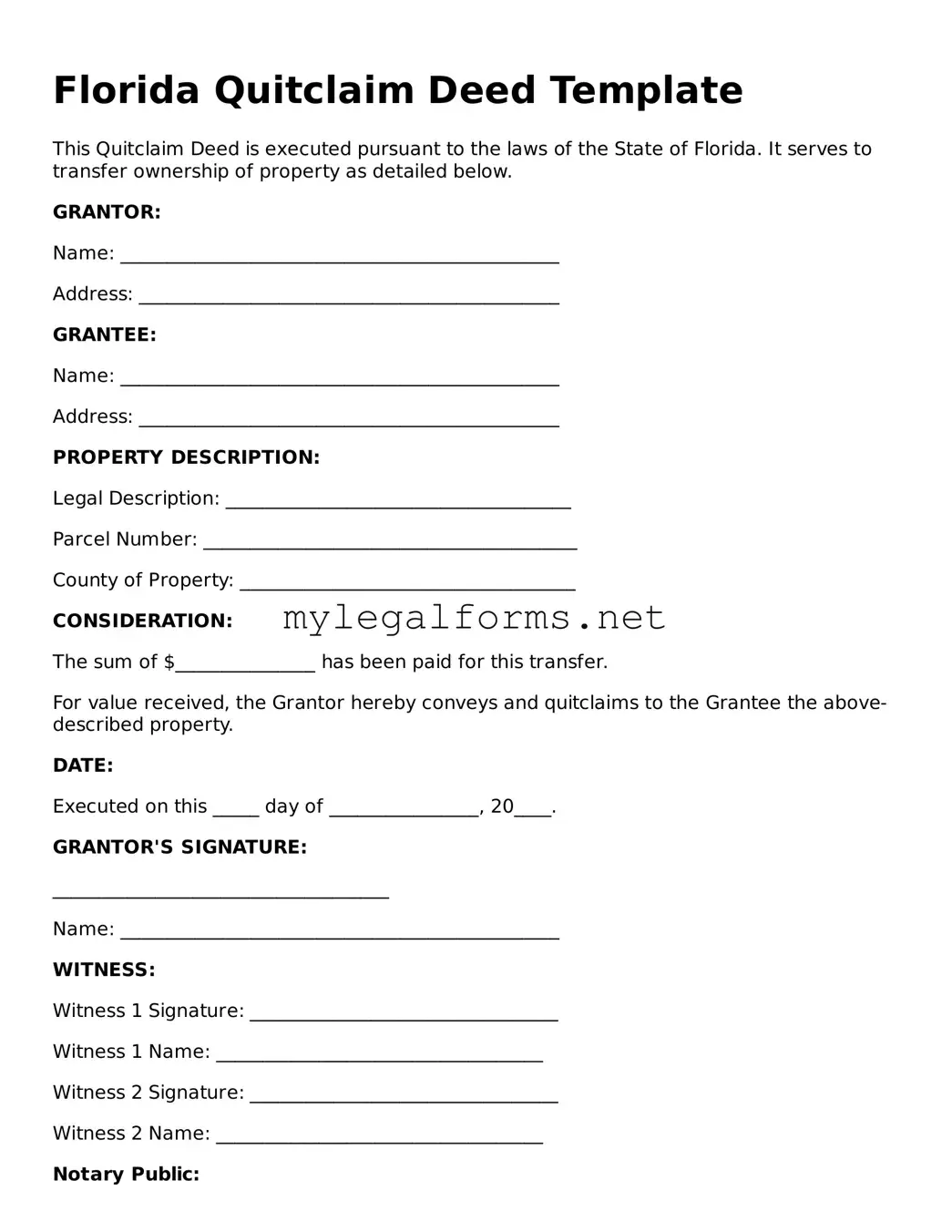Florida Quitclaim Deed Template
This Quitclaim Deed is executed pursuant to the laws of the State of Florida. It serves to transfer ownership of property as detailed below.
GRANTOR:
Name: _______________________________________________
Address: _____________________________________________
GRANTEE:
Name: _______________________________________________
Address: _____________________________________________
PROPERTY DESCRIPTION:
Legal Description: _____________________________________
Parcel Number: ________________________________________
County of Property: ____________________________________
CONSIDERATION:
The sum of $_______________ has been paid for this transfer.
For value received, the Grantor hereby conveys and quitclaims to the Grantee the above-described property.
DATE:
Executed on this _____ day of ________________, 20____.
GRANTOR'S SIGNATURE:
____________________________________
Name: _______________________________________________
WITNESS:
Witness 1 Signature: _________________________________
Witness 1 Name: ___________________________________
Witness 2 Signature: _________________________________
Witness 2 Name: ___________________________________
Notary Public:
State of Florida
County of _____________________________
On this _____ day of ________________, 20____, before me, a Notary Public, personally appeared ______________________________, known to me to be the person(s) described herein and who executed this instrument.
Notary Public Signature: _________________________________
My Commission Expires: _____________________
